SHARING SOME SECRETS IN COUNTERS AGAINST A BOXER'S ATTACKS
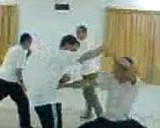
Sharing some secrets in Counters against a Boxer's Attacks
As many martial artists today use Boxing techniques to spar or fight, being able to counter a Boxer's attacks is essential if we wish to be combat efficient.
Boxing techniques are relatively simple and not many, but we must bear in mind that the forte of Boxing is not its techniques but its skills. In other words, despite his limited techniques, a Boxer can be a formidable fighter. Even when a kungfu exponent knows the techniques to counter a Boxer's attacks, in real life he may be unable to do so if the Boxer is skillful. And Boxers are generally skillful.
If we wish to apply kungfu for combat, we need to know the techniques against Boxing, otherwise we ourselves would be fighting like Boxers. We have to chose those techniques that are best suited to fight Boxing, then develop our skills to apply them so that although a Boxer may be skillful we still can match or surpass him using our kungfu skills and techniques.
A Boxer's best skills are speed and agility. In fact the way he fights brings out these skills commendably. His weakness is his limited range of techniques. Logically, if we minimize his skills and exploit his weakness, we have a good chance to beat him.
Reversely, if we maximize his skills and are ignorant of effective techniques, we hand a Boxer a good opportunity to beat us. Yet, surprisingly it may be, many kungfu exponents today are doing just this. When they spar or fight, they bounce like a Boxer (which is maximizing a Boxer's skills) and throw away their own kungfu techniques (ignorant of techniques).
An important objective of the Special Shaolin Kungfu Course of September 2005 was to enable participants effectively counter Boxing attacks. The video clips in this series, which are taken impromptu, show some of these lessons, from which some important secrets can be learnt.
We can anticipate that some critics would argue the techniques and tactics shown here cannot be used against real Boxers. (By now we should know that some stubborn critics just argue on anything despite convincing evidence against their arguments.) This reveals their shadow understanding of philosophy and methodology (if they are sincere in their argument).
The issue here is not whether we can beat Boxers in real fights (this will depend on other factors like skills and fighting experience), but to work out appropriate techniques and develop relevant skills so that we can apply the kungfu we practice in the best possible ways to match Boxers if we have to fight them. It is precisely such shallow understanding that caused the pathetic situation today where so many kungfu practitioners cannot apply their kungfu at all to defend themselves against Boxers or any other martial stylists.
Also remember to transfer the principles and skills we learn in our training to our daily life, which actually is a hallmark of our school. Take for an example the tactic of “when there is form, strike the form; if there is no form, chase the shadow” demonstrated in one of the video clips. If an opponent makes some faulty points in a debate, we attack these faulty points. If there are no faulty points, we stress our own points and elaborate convincingly. We do this when we know we are right and it is beneficial to do so. If we are wrong, we accept our mistakes graciously and thank the persons for pointing out our mistakes.
Then why don't we argue with stubborn critics who say there are no such things as chi, or that kungfu cannot be used for fighting? It is because although we know we are right, we also know that it is not beneficial to argue with them. We offer them the opportunities to experience for themselves the reality of chi and kungfu combat, but if they chose to be close, we would not want to waste time on them.
Minimizing a Boxer's Skills by Keeping him at Bay

At the start of the training sessions devoted to countering Boxing attacks, course participants are told the principle of minimizing a Boxer's skills and exploiting his weakness, and are asked to work out their own techniques against a Boxer's attacks. Many of them use the pattern “Fierce Dragon Across Stream” to keep a Boxer at bay — a technique they learned earlier from Sifu Kai Uwe Jettkandt at Warrior Project courses. This effectively minimizes a Boxer's skills.
Counter-Attacking a Boxer

After minimizing a Boxer's skills by keeping him at bay, the next step is to attack the Boxer using techniques that he is not normally trained in his art, such as kicks and elbow strikes. The tactic of pressing attacks is also used. This is exploiting his weakness.
Minimizing his Strength and Exploiting his Weakness
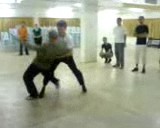
Mark and Simon, both assistant instructors of Shaolin Wahnam England, show the class some effective techniques they have worked out themselves from their sparring session against a Boxer. Mark uses a “dragon's hand” to deflect a Boxer's fast attacks, and overcomes him with a technique — a backward throw — that he is not normally trained to counter. By means of good footwork and “closing” the opponent's hands, Simon minimizes the speed and agility of a Boxer, then counter-attacks with kicks, which a Boxer is normally ill-trained to defend against. Laughter is a common feature in Shaolin Wahnam training.
Using an Attack where he has No Defence
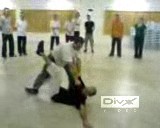
Ronnie of Shaolin Wahnam Switzerland applies “Felling Tree with Roots” to fell a Boxer, posed by Hubert of Shaolin Wahnam England, again using an attack technique where there is no defend in Boxing, because such an attack is not allowed by Boxing rules. Notice also that Ronnie grips Hubert's arm for the backward throw, and a Boxer within his art would not know how to release the grip, again because grips are not allowed in Boxing. These are two examples of exploiting a Boxer's weakness.
Effective Techniques and Tactics against a Boxer
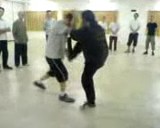
Joshua of Shaolin Wahnam USA demonstrates then explains some effective techniques as well as tactics against a Boxer, posed by Chris of Shaolin Wahnam England. These include the techniques of gripping and kicking, which a Boxer is not professionally trained to defend against, and the tactic of “one against two” where Joshua can control both of a Boxer's hands with just one hand. This is another example of exploiting an opponent's weakness and minimizing his strength.
Strike Form Chase Shadow
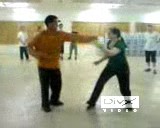
“When there is form, strike the form; if there is no form, chase the shadow.” This tactic, known in Chinese as “yow yin ta yin, mo yin choui ying” (Cantonese pronunciation), is effectively used here by Nicky of Shaolin Wahnam England against a Boxer. Davie of Shaolin Wahnam Scotland, on the other hand, uses the tactic of “Intercept and Strike”, which is “chit ta” in Chinese (Cantonese pronunciation). These tactics manifest the principle of “Minimizing the Opponent's Strength, Exploiting his Weakness”, which is “pei choong ta hang” in Chinese (Cantonese pronunciation), and literally it means “Avoid the Heavy, Strike the Light”. There is much laughter in Shaolin Wahnam training.
Using Kicks against a Boxer
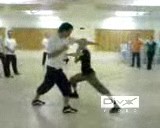
Kicks are very effective techniques against a Boxer. This is applying the tactic of “Long against Short”, or “ye cheong ta thuin” in Chinese (Cantonese pronunciation). Often it does not matter what techniques a Boxer uses, or whether he is attacking or defending, if you kick him, especially using the side-kick, he would not know what to do. This is because as kicks are not permitted in Boxing, a Boxer is not trained to handle kicks. Besides kicks, Sifu Markus of Shaolin Wahnam Finland and Innes of Shaolin Wahnam Scotland also demonstrate other effective techniques and tactics.
Kicks and Body Movement
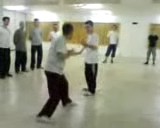
Sifu Jordon of Shaolin Wahnam England also uses kicks against a Boxer. But instead of kicking straight-away, he tempts the opponent to move in with attacks first. Then he kicks the opponent when he least expects it. Some people may not find anything special about the techniques of Chris of Shaolin Wahnam Scotland against a Boxer. But he uses excellent body-work to minimize the Boxer's speed. Without moving his feet but just moving his body, Chris is actually faster than a Boxer in his attack and defence.
Reversing the Speed Advantage of a Boxer
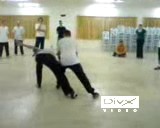
Sifu Tim of Shaolin Wahnam England and Jonny Say of Shaolin Wahnam Scotland demonstrate some effective techniques and tactics they have worked out on a Boxer, and explains the philosophy of their choice. Sifu Wong highlights the fact that the two techniques they use, namely deflecting and intercepting, are opposite in their nature and momentum, yet both minimize the speed of a Boxer's attacks. Sifu Wong also mentions that Tim uses two attacking techniques, namely grips and kicks, that have no defence in Boxing.
Taking the Initiative on a Boxer

Sifu Wong compliments Jamie of Shaolin Wahnam Scotland for using a tactic that is quite different from the others shown earlier. While the others react on a Boxer's initiative, Jamie takes the initiative and presses on the Boxer. As soon as the Boxer moves, Jamie moves in and presses on with a few attacks, reversing the speed advantage of the Boxer. Jamie can do so by means of excellent body-work and foot-work.
LINKS
Lessons from the Special Shaolin Kungfu Course of September 2005
- Part 1 - Initiating and Responding to Attacks
- Part 2 - Secrets in Counters against Boxer's Attacks
- Part 3 - Process of Composing a Kungfu Set
- Part 4 - Combat Sequences from Specialized Sets
- Part 5 - Refining Combat Sequences of Specialized Sets
- Part 6 - Making Variations to Meet Changing Combat Situations
- Part 7 - Bringing out the Beauty of Shaolin Kungfu in Combat
- Part 8 - From Pattern-Sets to Sequence-Sets
- Part 9 — Sparring at the Haphazard, Technique and Sequence Levels
- Part 10 — Improving Techniques and Flow in Free Sparring
- Part 11 — Free Sparring using Kungfu Skills and Techniques
- Part 12 — The Flowing Water Staff and its Application
Courses and Classes
